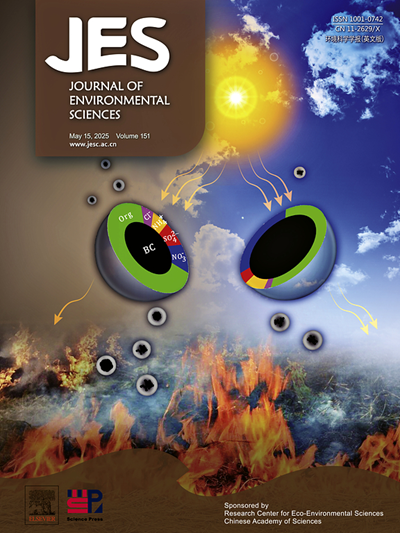莳萝的金属组学:环境应力和商业样品污染的影响
IF 5.9
2区 环境科学与生态学
Q1 ENVIRONMENTAL SCIENCES
引用次数: 0
摘要
利用年生植物莳萝(Anethum graveolens)监测55种元素,研究了斯洛伐克doln本文章由计算机程序翻译,如有差异,请以英文原文为准。
Metallomics of dill: Influence of environmental stress and contamination of commercial samples
Dill (Anethum graveolens), an annual species, was used to study the impact of metallic pollution potentially spreading from the nickel smelter dump in Dolná Streda (Slovakia) by monitoring 55 elements. Despite the proximity of this dump (1 km), only soil Ni (54.8 mg/kg) or Pb (47.3 mg/kg), but not Cr, Mn, Fe or Co (main elements of the dump's sludge) was elevated in given garden soil compared to two control sites. Mainly flowers and/or leaves contained significantly higher amounts of Ni, Cr, Pb, Cu, As, Sb, Sn, V, W, and some rare earth elements at the site close to the dump. Correlation between elements in organs and soil was significant mainly in stem or root but the bioaccumulation factor was typically low (<0.02) for most elements. A positive finding was that the 2022/2024 comparison revealed a decline in most elements in dill leaves, even at the dump site, which may reflect a decrease in the content of air PM particles. Soluble phenols were less accumulated in plants close to the nickel smelter dump, but flavonols showed the opposite trend, and free amino acids were positively correlated with many elements in the stem and root. An evaluation of commercial dill samples revealed variability (e.g., up to 0.7 mg Cd/kg dry weight) but subsequent NCA and PCA analyses clearly separated the dump locality from other samples. However, significant differences in the content of Cd, Ni, Pb, As, and other elements encourage precise control of commercially available dill dry matter.
求助全文
通过发布文献求助,成功后即可免费获取论文全文。
去求助
来源期刊

Journal of Environmental Sciences-china
环境科学-环境科学
CiteScore
13.70
自引率
0.00%
发文量
6354
审稿时长
2.6 months
期刊介绍:
The Journal of Environmental Sciences is an international journal started in 1989. The journal is devoted to publish original, peer-reviewed research papers on main aspects of environmental sciences, such as environmental chemistry, environmental biology, ecology, geosciences and environmental physics. Appropriate subjects include basic and applied research on atmospheric, terrestrial and aquatic environments, pollution control and abatement technology, conservation of natural resources, environmental health and toxicology. Announcements of international environmental science meetings and other recent information are also included.
 求助内容:
求助内容: 应助结果提醒方式:
应助结果提醒方式:


